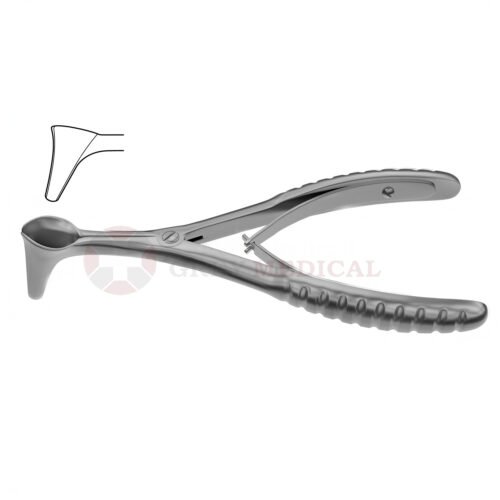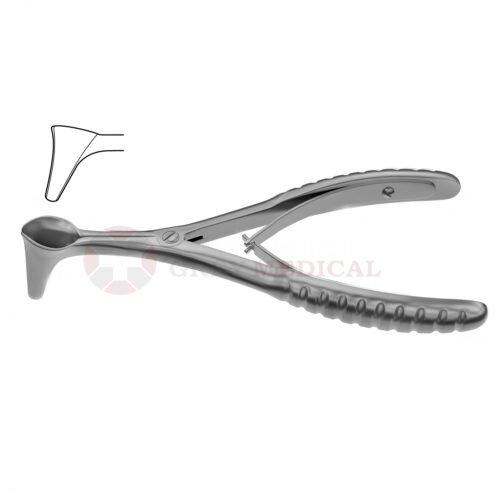In the world of medical instruments, some tools are fundamental to specific fields of practice. For otolaryngologists (ENT specialists) and other healthcare professionals who examine the nasal passages, the nasal speculum is one such indispensable instrument. This simple yet effective device plays a critical role in both diagnosis and surgical procedures, providing the clear visualization needed to treat a wide range of nasal conditions. Understanding its design, function, and importance highlights the blend of precision and practicality required in surgical instrument manufacturing.

What Are Nasal Speculums and Why Are They Important?
A nasal speculum is a medical instrument designed to gently open the nostril, allowing a physician to gain an unobstructed view of the internal nasal structures. This includes the nasal septum, turbinates, and the mucous membranes lining the nasal cavity. Without this tool, performing a thorough examination or a precise surgical procedure within the confined space of the nose would be nearly impossible. Its primary function is to provide access and visibility, which are the cornerstones of safe and effective patient care in rhinology.
The importance of nasal speculums extends from routine check-ups to complex surgeries. During a diagnostic examination, a speculum helps identify issues such as septal deviations, nasal polyps, inflammation, or the source of a nosebleed. In a surgical setting, it maintains an open field, enabling surgeons to perform procedures like septoplasty, turbinectomy, or foreign body removal with greater accuracy and control. The instrument's ability to provide a clear, direct line of sight minimizes the risk of unintended injury to delicate nasal tissues.
Exploring the Different Types of Nasal Speculums
While the basic function remains the same, nasal speculums are available in various designs, each tailored for specific clinical situations and patient populations. The choice of speculum often depends on the procedure being performed, the patient's anatomy, and the surgeon's preference. This variety ensures that healthcare providers have the right tool for every unique case they encounter.
The Hartmann and Vienna Models
Two of the most commonly recognized designs are the Hartmann and Vienna nasal speculums. The Hartmann speculum is a tweezer-like instrument with two short blades that are inserted into the nostril. Squeezing the handle gently spreads the blades, dilating the nasal opening. This type is often used for quick examinations and minor procedures.
The Vienna nasal speculum, on the other hand, is a more robust, funnel-shaped instrument. It is typically used for broader visualization and is a staple in many ENT clinics. Its smooth, flared blades are designed for patient comfort while providing an excellent view of the anterior nasal cavity. Both designs are essential tools in the arsenal of any professional dealing with nasal health.
Specialized Speculums for Advanced Procedures
Beyond these common types, there are more specialized instruments. The Killian nasal speculum features longer blades, making it ideal for accessing deeper structures within the nasal cavity, a requirement for many surgical interventions. Similarly, pediatric nasal speculums are smaller, more delicate versions designed specifically for the smaller anatomy of children, ensuring both safety and comfort during examinations. The existence of these specialized variations demonstrates the nuanced requirements of rhinology and the need for high-quality, purpose-built instruments.
The Intersection of Innovation and Craftsmanship
The effectiveness of any surgical instrument lies in its design and manufacturing quality. For a tool like a nasal speculum, which is used in a highly sensitive area, attributes like material quality, surface finish, and ergonomic design are paramount. Instruments must be durable enough to withstand repeated sterilization cycles without corroding or degrading, yet precise enough to function flawlessly every time.
This is where the expertise of dedicated manufacturers becomes crucial. Companies like GreyMedical®, a privately owned medical technology company, are committed to innovation and excellence in the craft of surgical instruments. By focusing on high-grade materials, such as surgical steel, and refining ergonomic designs, they ensure that healthcare professionals have access to tools that are not only effective but also reliable and safe for patient use. The development of high-quality nasal speculums is a testament to this commitment, blending traditional instrument design with modern manufacturing standards.
Proper Use and Maintenance for Optimal Performance
To ensure patient safety and the longevity of the instrument, proper handling and maintenance of nasal speculums are essential. Before use, the speculum should be thoroughly sterilized according to established medical protocols to prevent infection. During an examination, the clinician gently inserts the closed blades into the nostril, taking care to avoid contact with the highly sensitive nasal septum. The blades are then slowly opened to dilate the nostril just enough to achieve the necessary view without causing discomfort.
After each use, the instrument must be cleaned and sterilized again. This process removes any biological material and prepares the speculum for its next use. Adhering to these protocols is fundamental to maintaining a safe clinical environment and preserving the integrity of the surgical instruments. High-quality instruments are designed to endure this rigorous cycle, reinforcing the importance of investing in well-crafted medical tools from trusted sources.
Conclusion
The nasal speculum may appear to be a simple device, but its impact on rhinology is immense. It provides the essential visualization needed for accurate diagnosis and successful surgical outcomes, making it a cornerstone of ENT practice. From the standard Vienna and Hartmann models to specialized versions for complex procedures, the variety of speculums reflects the diverse needs of patients and clinicians. The dedication of companies like GreyMedical® to producing high-quality, innovative surgical instruments ensures that doctors have reliable tools they can trust. Ultimately, this seemingly modest instrument is a powerful enabler of better healthcare, allowing professionals to examine, diagnose, and treat nasal conditions with confidence and precision.

